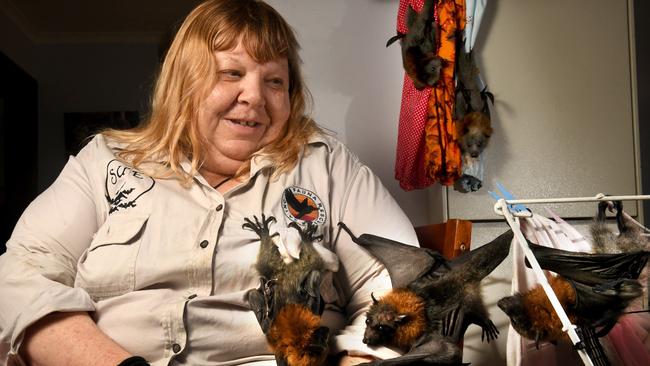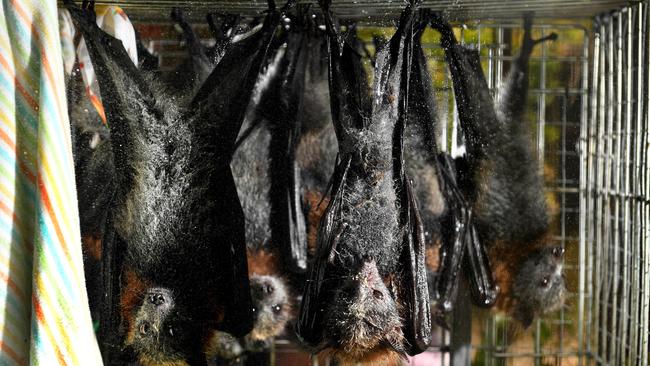An entire generation of flying foxes has died in the heatwaves, but fruit is needed for the surviving young
Fauna Rescue is looking after 400 flying fox young following the impacts of this month’s heatwaves, and it needs your help to satiate their appetites for fruit.

SA News
Don't miss out on the headlines from SA News. Followed categories will be added to My News.
- January: Dead bats dropping from Adelaide trees
- Cool change finally bringing heat down
- The Advertiser +Rewards – latest giveaways, offers and comps
About 8000 flying fox pups have become the victims of this month’s heatwaves, with animal carers now seeking help to look after 400 survivors in their care.
Fauna Rescue flying fox co-ordinator Sue Westover is nursing 61 of the heat stress victims at her home.
“Basically, a whole generation of flying foxes has been wiped out in Adelaide this year, which is pretty sad,” Mrs Westover said.
“They’re listed as vulnerable now and I’d say it won’t be long until they’re on the endangered list.”
Mrs Westover said grey-headed flying foxes dispersed seeds and pollinated flowers, so other species which relied on gum trees or Moreton Bay figs would also be affected by their population hit.

Since she began looking after flying foxes a decade ago, the organisation has never cared for so many bats. Last year, volunteers looked after 137 of the animals.
Bat carers are calling for donations of fruit to help cater for the flying foxes’ appetite.
SA’s population is based at Botanic Park, and Mrs Westover said volunteers wanted understorey species planted there to help provide extra cover for the animals during heatwaves, along with a potential misting system for trees where bats were roosting.

Environment Department ecologist Jason Van Weenen said the Government was working with Fauna Rescue, the City Council, Adelaide Zoo and Adelaide University to find long-term care measures for the flying fox colony.
MORE NEWS
Birds of prey, bats called in to boost winegrape production
Wildlife returns to Nature Glenelg Trust’s Mount Burr Swamp habitat
“We are talking with rescue groups and bat welfare experts around the country about care measures showing signs of success like misting systems, planting understorey vegetation and installing sprinklers in canopies,” Mr van Weenen said.
This included exploring the installation of sprinkler canopies in Botanic Park.
“We have been using pop-up sprinklers near the colony in Botanic Park to help cool them off, which has helped, but further measures are needed to reduce heat stress in the colony,” Mr van Weenen said.
For details on fruit donation points, visit the Adelaide Bat Chat Facebook page.
